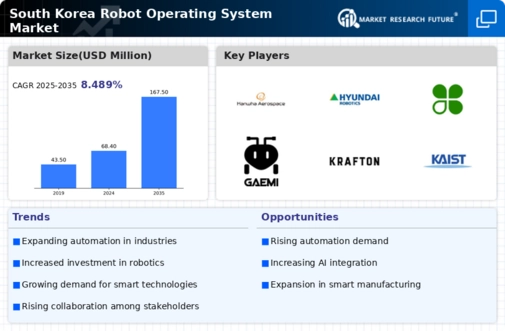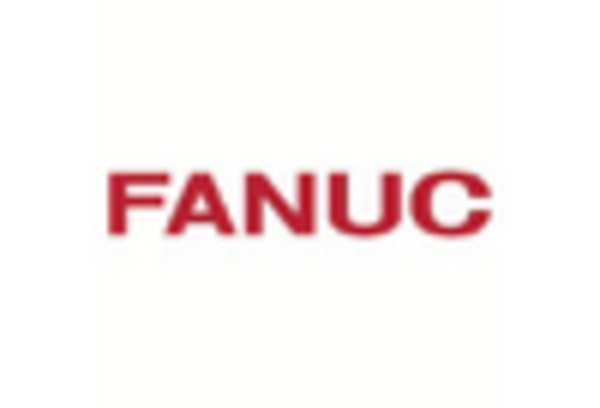Technological Advancements in Robotics
Technological advancements play a pivotal role in shaping the robot operating-system market. Innovations in artificial intelligence, machine learning, and sensor technologies are enhancing the capabilities of robotic systems. In South Korea, research and development initiatives are fostering the creation of more sophisticated robots that can perform complex tasks with greater precision. The market is witnessing a shift towards collaborative robots, or cobots, which are designed to work alongside humans. This evolution is likely to increase the demand for advanced robot operating systems that can support these new functionalities. As a result, the robot operating-system market is expected to expand, driven by the continuous evolution of technology and the need for systems that can adapt to new robotic applications.
Growing Investment in Robotics Startups
The robot operating-system market is significantly influenced by the influx of investment in robotics startups within South Korea. Venture capital firms and government initiatives are channeling funds into innovative companies that focus on developing cutting-edge robotic solutions. This financial support is crucial for fostering innovation and accelerating the development of new robot operating systems. In recent years, the robotics sector has attracted investments exceeding $500 million, indicating a robust interest in advancing robotic technologies. As these startups emerge with novel solutions, the robot operating-system market is likely to experience a transformation, characterized by the introduction of diverse and specialized operating systems tailored to specific applications.
Increased Focus on Safety and Compliance
Safety and compliance are becoming paramount in the robot operating-system market, particularly in sectors such as manufacturing and healthcare. As regulations evolve, companies are compelled to adopt robotic systems that adhere to stringent safety standards. In South Korea, the government has implemented guidelines to ensure that robotic technologies are safe for human interaction. This regulatory landscape drives the demand for robot operating systems that incorporate safety features and compliance protocols. Consequently, manufacturers are investing in systems that not only enhance productivity but also prioritize worker safety. The emphasis on safety and compliance is likely to shape the future of the robot operating-system market, as organizations seek to mitigate risks associated with robotic deployments.
Rising Demand for Automation in Industries
The robot operating system market experiences a notable surge in demand due to the increasing need for automation across various sectors in South Korea. Industries such as manufacturing, logistics, and healthcare are actively seeking to enhance operational efficiency and reduce labor costs. This trend is reflected in the projected growth of the automation sector, which is expected to reach a valuation of approximately $10 billion by 2026. As companies strive to remain competitive, the integration of advanced robotic systems becomes essential, thereby driving the adoption of sophisticated robot operating systems. The robot operating system market is thus positioned to benefit from this growing inclination for automation, as businesses recognize the potential for improved productivity and streamlined processes.
Expansion of Educational and Research Institutions
The expansion of educational and research institutions in South Korea is contributing to the growth of the robot operating-system market. Universities and research centers are increasingly focusing on robotics and automation, fostering a skilled workforce equipped with the necessary expertise. This academic emphasis is leading to the development of innovative robot operating systems that are tailored to meet industry needs. Collaborations between academia and industry are becoming more common, resulting in the creation of cutting-edge technologies. As educational programs evolve to include robotics, the robot operating-system market is likely to benefit from a steady influx of talent and ideas, driving further advancements in the field.

















Leave a Comment